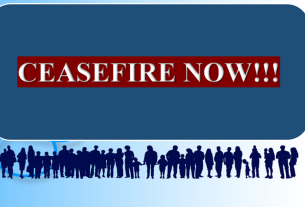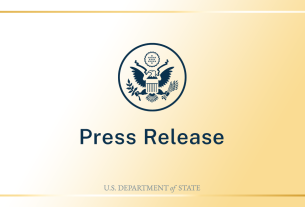|
Getting your Trinity Audio player ready...
|
For many corporate teams, the notion of “good conflict” is merely a myth. Most often, conflict is seen as a roadblock to success–especially when it involves clashing personalities or disagreements over strategy. But what if, in certain cases, the right kind of team conflict fuels creativity? That’s the idea behind our new research, which suggests that, handled well, some team fights might just be the key to sparking fresh ideas.
And it turns out that who is in conflict can make all the difference.
Researchers have long explored how team conflicts affect creativity, with some arguing that the right conflict can boost creativity, and others saying that conflict erodes it. Unfortunately, the findings have been all over the place so far. A common research approach has been to lump all conflict into the same bucket, or to separate task-centered conflict and relationship-oriented conflict and then assume they affect everyone in the team equally. But as we’re learning, these approaches might be too simplistic.
Newer research, including our own, suggests that considering the roles of individual team members, and particularly their network status in the team, can paint a much clearer picture of how conflict can affect creativity. In particular, conflicts involving “critical members”–those who play a central role in a team’s workflow–seem to be where the real action is.
The (sometimes) bright side of conflict
In any team, disagreements about the task at hand–such as how to distribute resources, make decisions or handle workflow – are bound to happen. These are known as “task conflicts”. And traditional research has often considered such disputes as potentially helpful, arguing that they can bring in new perspectives, spur discussion and, if managed properly, enhance team creativity. That said, data often tell a different, more complicated story. We started our research as an attempt to reconcile some of the inconclusive results.
Using network analysis, which is a way to explore the unique interactions and relationships between individuals, in 70 new product development teams, we found that task conflicts involving critical members of a team can indeed spark creativity by pushing the team to reflect on their work. But this is only under certain conditions. Specifically, critical members’ task-related disagreements seem to have creative potential when they occur in teams that report higher levels of shared goals. These results hold even when accounting for all other task conflicts in the team.
Here’s how it works: when a critical member – the one others depend on for essential information – engages in task conflict, teams are forced to take a step back, reassess what’s happening and consider new approaches. It pushes the team out of autopilot mode and, so long as team members are aligned with shared goals, it encourages a mindset of flexibility and fresh ideas, which are the lifeblood of creativity. Absent shared goals, we don’t really see much creative benefit from critical members’ task conflicts, which is not surprising – why do the hard work of questioning the status quo if you don’t agree on the outcome you want? As it turns out, much of what we have traditionally assumed about and measured in task conflict does not really help us understand how it is conducive to creativity; what happens with the critical members in the center of a team’s network is where the fruits of diverse thinking can emerge.
The dark side of conflict
On the flip side, personal spats – known as “relationship conflicts” – have a different effect. These are conflicts that aren’t really about the work itself, but rather stem from personality clashes or interpersonal issues.
Past research has been pretty clear about the negative effects of team relationship conflict on creativity, but our work shows that when these conflicts involve critical members, the effects are even more deleterious. Namely, critical members’ interpersonal conflicts erode the team’s cohesion, i.e., the “glue” of the group, which destroys the trust and safety needed to try new, creative things.
When critical members possess high levels of emotional intelligence, the worst of these negative effects can be mitigated. In short, emotional intelligence helps these key players handle personal tensions in a way that keeps the team together, even when conflicts pop up. So, once again, our study’s findings emphasize that the way conflict affects teamwork is largely dependent on how the people in the center of the network experience it.
Practical takeaways
So, what can leaders do to harness the creative potential of conflict while minimizing its downsides? Here are a few actionable steps:
Get crystal clear on goals: By establishing common goals, leaders create an environment where task conflicts are more likely to be constructive. When team members are all pulling in the same direction, disagreements about how to get there can be resolved more productively, driving the team to reflect and adapt in creative ways.
Coach for emotional intelligence: Because relationship conflicts involving critical members can harm cohesion, it’s essential to equip these key players with the emotional skills needed to manage personal tensions. Often, star individual contributors find themselves in the center of a team’s network because of their task-related skills, not because of their interpersonal ones. This is a dangerous recipe! Selecting for or coaching on emotional intelligence can help set critical members up to handle conflicts in ways that don’t damage team unity, preserving the group’s creative potential.
Reconsider conflict: Recognize that not all conflicts are equally disruptive – or equally beneficial. A well-designed team structure will consider both the roles of critical members and how conflicts involving them can shape team dynamics. Leaders can look at conflict not just as a problem, but as a potential driver of creativity, depending on who is involved and how it’s handled.
Overall, traditional research on team conflict treated task and relationship conflicts as if they affect everyone equally. This might explain why we still know relatively little about links between conflict and creativity. Thanks to advances in how we explore team data using more complex network analyses, we can see that conflict involving critical members disproportionately affects team dynamics and creativity – and start identifying ways to manage conflict in more productive ways.



